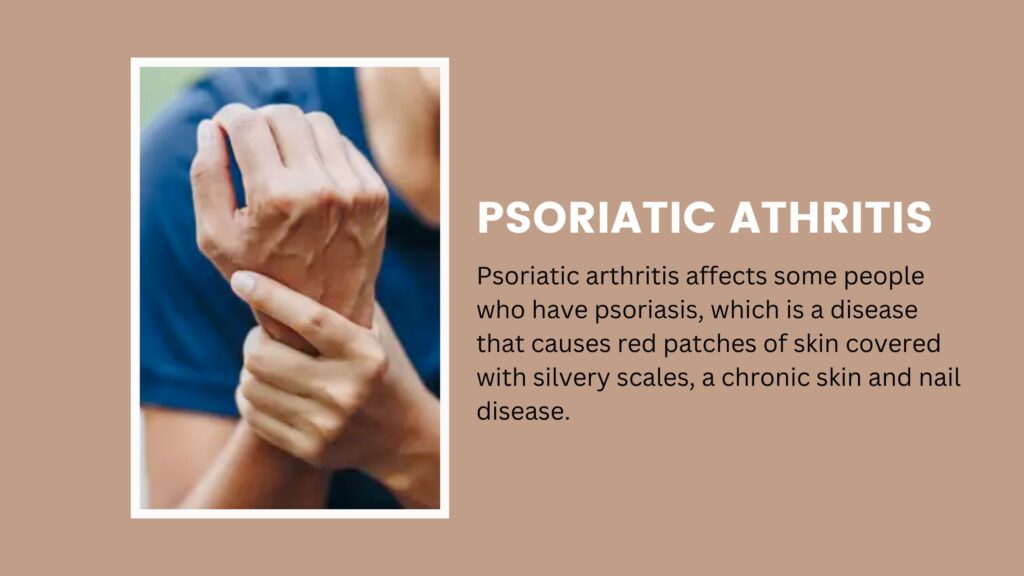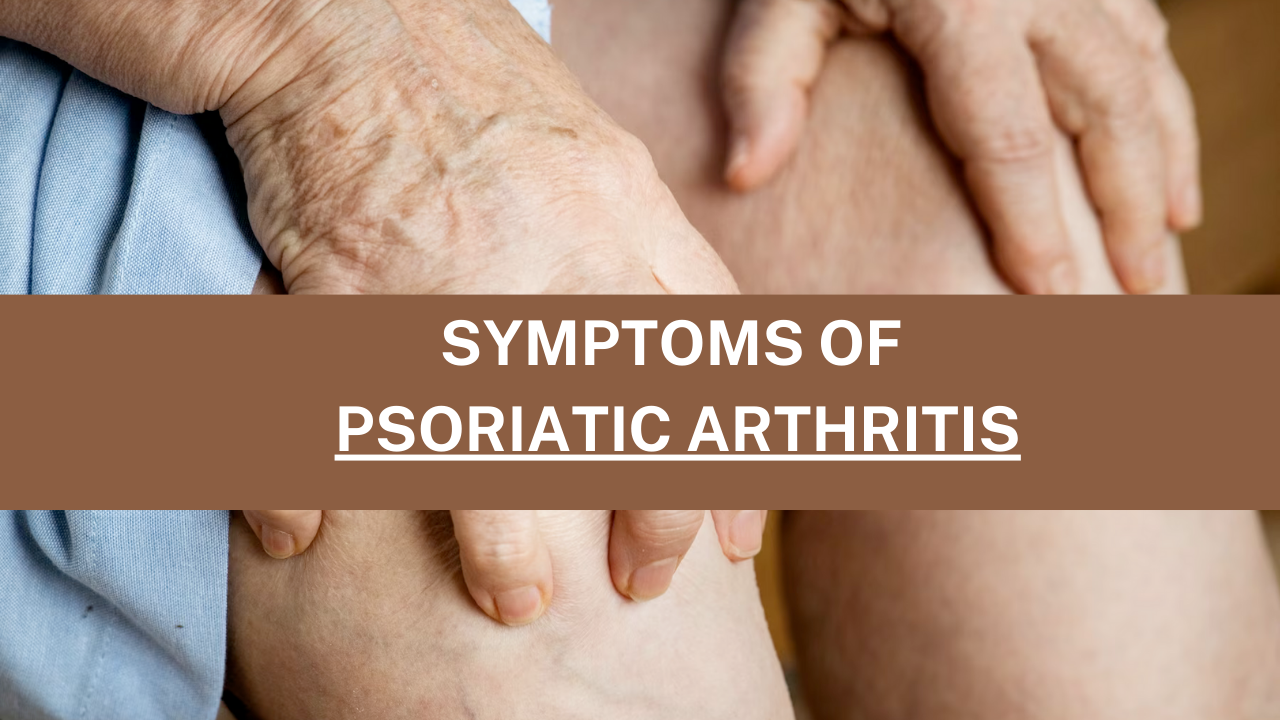Psoriatic arthritis affects some people who have psoriasis, which is a disease that causes red patches of skin covered with silvery scales, a chronic skin and nail disease. Joint pain, stiffness and swelling are some main signs of of psoriatic athritis. Sometimes skin patches starts showing before or after the joint problem.
Psoriatic Athritis may affect any part of the body, including fingertips or even spine.
There’s no cure for psoriatic arthritis. Treatment is aimed at controlling symptoms and preventing joint damage. Missing or neglecting the posoriatic athritis treatment may lead to disabling overtime.
Table of Contents
What are the symptoms Psoriatic Athritis ?
Both psoriatic arthritis and psoriasis are chronic diseases that worsen over time. Sometimes it seems the symptoms temporarily go away. However, it is important to continue with the treatment.
Psoriatic arthritis can affect joints on one or both sides of your body. The signs and symptoms of psoriatic arthritis often resemble those of rheumatoid arthritis, a disease in which our immune system attacks healthy cells in body by mistake, causing inflammation (painful swelling) in the affected parts of the body. Both of these types of Athritis diseases cause joints to become painful, swollen and warm to the touch.
Information Source : Mayoclinic.org
Signs and Symptoms Psoriatic Athritis
- Swollen fingers and toes. Psoriatic arthritis can affect fingers and toes and lead to painful experience, making it to swell.
- Foot pain. Psoriatic arthritis can also cause pain at the points where tendons and ligaments attach to your bones — especially at the back of your heel (Achilles tendinitis) or in the sole of your foot (plantar fasciitis).
- Lower back pain. Some people develop a condition called spondylitis as a result of psoriatic arthritis. Spondylitis mainly causes inflammation of the joints between the vertebrae of your spine and in the joints between your spine and pelvis (sacroiliitis).
- Nail changes. Nails can form tiny dents (pits), crumble or separate from the nail beds.
- Eye inflammation. Uveitis can cause eye pain, redness and blurry vision. If untreated, uveitis can lead to vision loss.
- Fatigue : The medication you use and due to severe swelling and pain of body, make you feel tired.
What are the causes of Psoriatic Athritis ?
Psoriatic arthritis occurs when your body’s immune system attacks healthy cells and tissue. The immune response causes inflammation in your joints as well as overproduction of skin cells.
What are the treatment of Psoriatic Athritis ?

It is still unclear that what causes psoriatic arthritis. There’s no permanent cure for psoriatic arthritis.
Psoriatic Athritis seems to be developed depending on different factors including, family history or genetic, age. If a family member is already affected with psoriatic athritis, it is likely to seems in next generation.
A thick, red rash or scaly patches of silvery white skin.
Stiff, painful, swollen, warm joints (large joints like knees or small ones in your fingers)
Fatigue.
Inflammation in your eyes (causing redness and blurred vision)
Psoriatic arthritis and psoriasis are both autoimmune conditions, caused by a fault in the immune system. Our immune system protects us from illness and infection. But in autoimmune conditions, the immune system becomes confused and attacks healthy parts of the body, often causing inflammation.
Psoriatic Arthritis Blood Test: Anti-Cyclic Citrullinated Peptide Test. Blood tests that look for the presence of anti-cylic citrullinated peptide antibodies (anti-CCPs), which are inflammatory, are commonly used to diagnose rheumatoid arthritis, but anti-CCPs can also indicate psoriatic arthritis.
No cure exists for psoriatic arthritis. Treatment focuses on controlling inflammation in your affected joints to prevent joint pain and disability and controlling skin involvement. One of the most common treatments are prescription medications called disease-modifying antirheumatic drugs (DMARDs).

